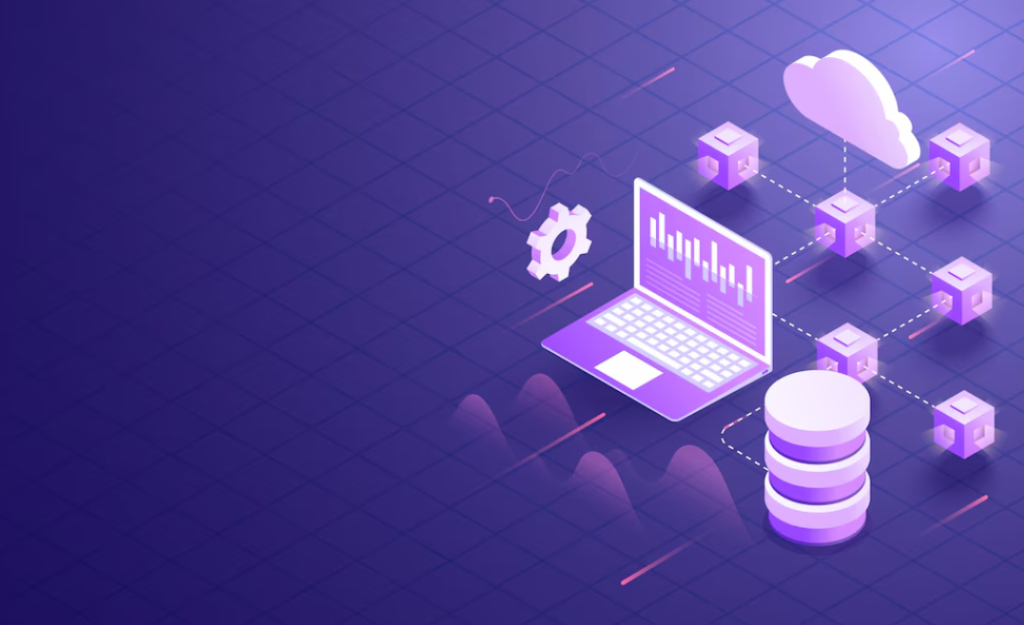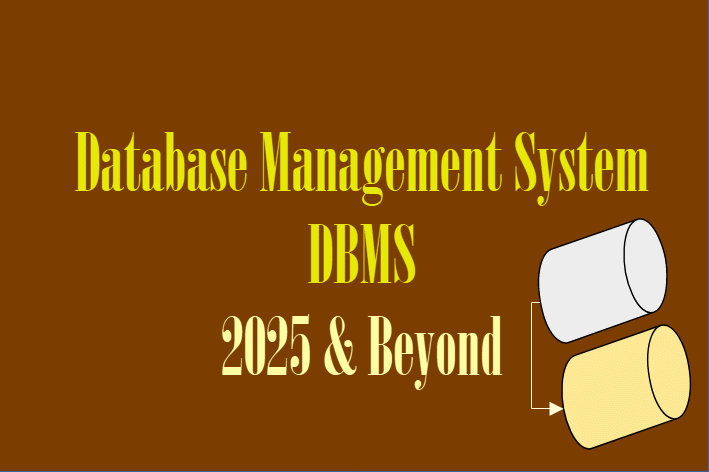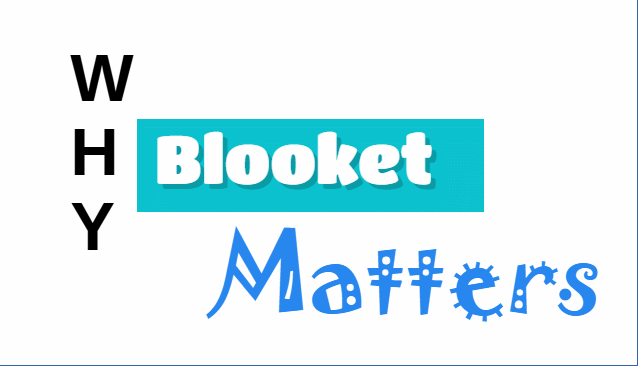Introduction
In the rapidly evolving landscape of software engineering, the Database Management System (DBMS) remains a cornerstone of technological advancement. A DBMS is software that interacts with end users, applications, and databases to capture and analyze data, ensuring seamless access, security, and performance. As organizations increasingly adopt digital transformation strategies, the demand for robust, scalable, and intelligent database solutions continues to grow.
Over the past decade, the rise of open-source technologies has significantly influenced database systems. Tools like MySQL, PostgreSQL, and MongoDB have gained popularity for their flexibility and cost-efficiency, while cloud-native databases like Google BigQuery and AWS RDS dominate enterprise-grade deployments. Additionally, advancements in artificial intelligence (AI) and machine learning (ML) have brought new capabilities to DBMS, enabling predictive analytics, automated query optimization, and self-healing databases.
The relevance of DBMS extends to every industry, from healthcare and finance to e-commerce and IoT. We are at the end of 2024 looking forward to new, cool and promising 2025, the emphasis is shifting toward hybrid and multi-cloud environments, decentralized data management, and enhanced real-time analytics. Technologies such as blockchain and graph databases are redefining how data is stored and queried, addressing challenges like scalability and complex relationships.
Table of Contents
Top 10 Exclusive Facts About Database Management Systems.
Overview of Modern DBMS Technologies.
Emerging Technologies to Watch in 2025.
4. Decentralized Finance (DeFi) and Web3.
7. Brain-Computer Interfaces (BCIs)
Education and Workforce Development
Challenges and Considerations.

Priced at ₹14,990/- after 42% Discount
DJI Action 2 Power Combo (128GB), Action Camera 4K + Extended Battery Module, 4K/120fps, Super-Wide 155° FOV
FAQs on Database Management Systems.
Technology-Specific Questions.
In this article, we will explore the core aspects of modern DBMS, including exclusive facts, FAQs, and its implications for the future. By delving into current trends, prevalent technologies, and best practices, we aim to provide a comprehensive guide for professionals, developers, and enthusiasts keen on understanding and leveraging DBMS in 2025 and beyond.
Benefits of Using a DBMS
- Data Integrity and Accuracy: Enforces rules to maintain data consistency.
- Enhanced Security: Implements robust access controls and encryption.
- Efficient Data Access: Optimizes query performance for faster retrieval.
- Scalability: Adapts to growing data volumes and user demands.
- Centralized Management: Simplifies data governance and backup.
- Cost Savings: Reduces redundancy and enhances resource utilization.
- Integration: Supports seamless interaction with various tools and platforms.
- Real-Time Analytics: Facilitates data-driven decision-making.
- Flexibility: Accommodates structured, semi-structured, and unstructured data.
- Support for Advanced Features: Incorporates AI, machine learning, and predictive analytics.

Challenges in DBMS
- Complexity: Managing large-scale, distributed databases can be daunting.
- Cost: Enterprise solutions often involve high licensing and operational expenses.
- Security Concerns: Increased data breaches necessitate advanced protection mechanisms.
- Scalability Limitations: Legacy systems may struggle to handle exponential data growth.
- Interoperability Issues: Ensuring compatibility between various systems can be challenging.
Top 10 Exclusive Facts About Database Management Systems
- DBMS Adoption Rates Are at an All-Time High: The global DBMS market is expected to exceed $120 billion by 2026, driven by cloud adoption and real-time analytics.
- AI-Driven Databases Are the Future: Platforms like Oracle Autonomous Database and Microsoft Azure SQL Database leverage AI to automate optimization, maintenance, and security.
- PostgreSQL’s Popularity Soars: As of 2024, PostgreSQL is the fastest-growing database, favored for its advanced features, open-source nature, and scalability.
- Graph Databases for Complex Data: Neo4j and Amazon Neptune lead in managing highly interconnected data, crucial for applications like fraud detection and social networks.
- Blockchain and Immutable Databases: Blockchain technology ensures secure and transparent data transactions, with use cases in finance, supply chain, and healthcare.
- Serverless Database Solutions: AWS Aurora Serverless and Google Cloud Firestore are revolutionizing the database landscape with their pay-as-you-go and auto-scaling models.
- Hybrid Cloud Deployments Are Mainstream: Enterprises increasingly adopt hybrid cloud strategies, integrating on-premise databases with cloud solutions for flexibility and cost control.
- Edge Computing Influences DBMS: With IoT proliferation, edge databases like Apache IoTDB enable local data processing, reducing latency and bandwidth usage.
- JSON and NoSQL Databases Dominate: MongoDB and Couchbase cater to unstructured data needs, making them ideal for dynamic and scalable applications.
- Enhanced Security Protocols: With rising cyber threats, modern DBMS incorporates advanced encryption, role-based access control, and anomaly detection to safeguard data.

Overview of Modern DBMS Technologies
1. Relational Database Management Systems (RDBMS)
RDBMS remains the most widely used type of database, employing structured query language (SQL) for managing data. Popular options include:
- MySQL: Known for simplicity and reliability.
- PostgreSQL: Offers extensive functionality, including support for JSON and geospatial data.
- Oracle Database: Excels in enterprise-grade solutions with robust features.
2. NoSQL Databases
NoSQL databases are designed for unstructured or semi-structured data, offering flexibility and scalability. Examples include:
- MongoDB: Ideal for real-time applications and content management systems.
- Cassandra: Suitable for high-velocity, distributed environments.
- Redis: A high-performance in-memory data store for caching and analytics.
3. Graph Databases
Graph databases focus on relationships between data points. They are instrumental in recommendation engines, fraud detection, and network analysis. Key players include Neo4j and Amazon Neptune.
4. Cloud-Native Databases
These databases are optimized for cloud environments, offering scalability, reliability, and minimal maintenance. Examples are:
- Amazon RDS
- Google Cloud Spanner
- Microsoft Azure Cosmos DB
5. Time-Series Databases
Time-series databases, like InfluxDB and TimescaleDB, excel at managing data indexed by time, making them perfect for IoT, monitoring, and analytics.
6. Blockchain-Based Databases
Blockchain databases, such as BigchainDB, provide immutability and transparency, making them ideal for decentralized applications.
7. In-Memory Databases
In-memory databases, like SAP HANA and Redis, store data in RAM, ensuring ultra-fast performance for applications like gaming and financial transactions.
Emerging Technologies to Watch in 2025
The technology landscape is ever-changing, with innovation at its core. As we approach 2025, several promising and transformative technologies are set to shape industries, redefine workflows, and enhance human capabilities. This article delves into the most exciting emerging technologies poised to make an impact, offering insights into their potential applications and implications.
Key Technologies to Watch
1. Quantum Computing
Quantum computing has been a buzzword for years, but 2025 might see its practical applications take center stage. Unlike classical computers, quantum systems use qubits, enabling them to solve complex problems exponentially faster. Companies like IBM, Google, and Rigetti are making strides, with potential applications in cryptography, drug discovery, and logistics optimization.
2. Generative AI
Generative Artificial Intelligence is evolving rapidly, enabling machines to create text, images, music, and even code. Beyond tools like ChatGPT, advancements in generative AI are powering industries like content creation, design, and personalized medicine.
3. 5G and Beyond
While 5G deployment continues, discussions around 6G are gaining momentum. These technologies promise ultra-low latency, higher speeds, and improved connectivity for IoT, autonomous vehicles, and augmented reality (AR) applications.
4. Decentralized Finance (DeFi) and Web3
DeFi, powered by blockchain, is transforming traditional finance. Combined with Web3 technologies, decentralized platforms promise increased transparency, security, and democratization of digital assets and services.

5. Edge AI
Edge AI integrates artificial intelligence capabilities directly into devices, reducing latency and enhancing data privacy. Applications range from autonomous drones to smart appliances and industrial IoT.
6. Biodegradable Electronics
As sustainability becomes paramount, biodegradable electronics are emerging. These devices are designed to reduce e-waste and can dissolve after use, paving the way for eco-friendly tech solutions.
7. Brain-Computer Interfaces (BCIs)
BCIs aim to bridge the gap between human cognition and digital systems. Companies like Neuralink are exploring ways to use BCIs for medical applications, such as assisting individuals with paralysis, and for enhancing human capabilities.
8. Synthetic Biology
Synthetic biology combines biology and engineering to design and construct new biological parts and systems. From creating lab-grown meat to designing microbes for environmental cleanup, the possibilities are vast.
9. Metaverse Technologies
The metaverse continues to expand with advancements in AR, VR, and mixed reality (MR). Technologies such as haptic feedback and spatial computing will enhance virtual interactions, enabling immersive education, training, and entertainment experiences.
10. Fusion Energy
Fusion energy, long considered the holy grail of energy solutions, is nearing feasibility. With projects like ITER and breakthroughs in magnetic confinement, fusion offers the promise of clean, unlimited energy.
Industry Impacts
Following are the industries that are bound to be potentially get impacted due to this change.
Healthcare
Technologies like quantum computing and synthetic biology will revolutionize drug discovery, gene editing, and personalized medicine. AI-driven diagnostics and robotic surgeries are set to become more precise and accessible.
Finance
DeFi and quantum-resistant cryptography will reshape how transactions and data security are managed, introducing new financial models and enhancing global economic inclusion.
Manufacturing and Logistics
Edge AI and quantum optimization will streamline supply chains, reduce inefficiencies, and drive automation. Smart factories powered by IoT will enable real-time decision-making.
Energy and Environment
Fusion energy and biodegradable electronics highlight the shift towards sustainable and renewable solutions, addressing pressing environmental concerns.
Education and Workforce Development
AR and VR technologies will transform learning experiences, enabling remote and immersive education. Skills training will become more effective with simulations and gamified content.
Challenges and Considerations
While these technologies hold immense promise, their development and deployment come with challenges:
- Ethical Concerns: Technologies like AI and BCIs raise questions about privacy, security, and equitable access.
- Infrastructure Needs: 5G and edge computing require significant investment in infrastructure.
- Regulatory Hurdles: Governments and organizations must establish frameworks to manage emerging tech responsibly.
- Skill Gaps: Widespread adoption will require reskilling and upskilling the workforce to handle advanced technologies.
The technologies of 2025 are set to redefine industries and improve lives, offering solutions to some of humanity’s most pressing challenges. From quantum computing to fusion energy, the potential is vast—but realizing it requires a concerted effort from innovators, policymakers, and society at large. By staying informed and adaptable, we can harness these advancements for a better future
FAQs on Database Management Systems
General Questions
- What is a Database Management System (DBMS)?
A DBMS is software that stores, retrieves, and manages data in a structured format, ensuring efficient and secure access.
- What are the types of DBMS?
Types include RDBMS, NoSQL, graph databases, cloud-native databases, time-series databases, and blockchain databases.
- How does DBMS ensure data security?
Modern DBMS employs encryption, role-based access control, anomaly detection, and auditing to protect data.
- What is the role of SQL in DBMS?
SQL is a standard language used in RDBMS to query, update, and manage data.
- What are the advantages of using a DBMS?
Benefits include centralized data management, improved security, scalability, and real-time analytics.
Technology-Specific Questions
- What is NoSQL, and how does it differ from SQL?
NoSQL databases handle unstructured and semi-structured data, while SQL databases are designed for structured data.
- What is a graph database?
Graph databases store data as nodes and edges, focusing on relationships, making them suitable for social networks and fraud detection.
- Which open-source DBMS is best for startups?
PostgreSQL and MongoDB are popular choices for startups due to their flexibility and cost-effectiveness.
- What is a cloud-native database?
A cloud-native database is designed for deployment on cloud platforms, offering scalability and minimal maintenance.
- How does blockchain enhance database security?
Blockchain databases ensure immutability and transparency, reducing the risk of data tampering.
Practical Questions
- What is database normalization?
Normalization organizes data to reduce redundancy and improve consistency.
- How do you choose the right DBMS?
Factors include data type, scalability needs, budget, and technical requirements.
- Can DBMS handle real-time analytics?
Yes, modern DBMS like Snowflake and Google BigQuery excel at real-time data processing.
- What are stored procedures in DBMS?
Stored procedures are precompiled SQL queries stored in the database for efficiency and security.
- What is database sharding?
Sharding splits a database into smaller, faster, and more manageable parts.
Trends and Future
- What is the future of DBMS?
The future includes AI-driven databases, multi-cloud integration, and advanced real-time analytics.
- Are hybrid databases the future?
Yes, hybrid databases combine the benefits of SQL and NoSQL for maximum flexibility.
- What is edge database management?
Edge DBMS processes data locally near IoT devices, reducing latency and bandwidth use.
- How does AI improve DBMS?
AI automates optimization, error detection, and predictive analysis, enhancing performance and reliability.
- What role does ML play in DBMS?
ML enables predictive analytics, automated schema generation, and anomaly detection in data.
Implementation
- How do I migrate to a new DBMS?
Plan the migration, back up data, and use tools like AWS DMS for seamless transfer.
- What is the cost of implementing a DBMS?
Costs vary based on the type of DBMS, licensing, hardware, and maintenance.
- What are database indexes?
Indexes improve query speed by providing quick access to specific data.
- What is the role of APIs in DBMS?
APIs facilitate communication between applications and databases, enabling data interaction.
- What is a distributed database?
A distributed database stores data across multiple servers, ensuring redundancy and scalability.
Maintenance
- How do I back up a database?
Use tools like mysqldump for MySQL or built-in features of cloud databases for regular backups.
- How do I monitor database performance?
Use monitoring tools like Nagios, Datadog, or database-native solutions.
- What is data replication in DBMS?
Replication involves duplicating data across servers for fault tolerance and faster access.
- How do I secure a DBMS?
Implement encryption, strong access controls, regular audits, and firewalls.
- What is query optimization in DBMS?
Query optimization enhances performance by improving how queries are executed.
Conclusion
As we venture into 2025 and beyond, Database Management Systems are becoming more intelligent, scalable, and integral to business success. The fusion of traditional database principles with emerging technologies like AI, cloud computing, and blockchain is shaping the future of data management. Open-source innovations, coupled with commercial advancements, ensure that organizations of all sizes have access to cutting-edge tools for their data needs.
Whether you are a developer, database administrator, or business leader, understanding DBMS trends and best practices will be crucial in navigating the complex data-driven landscape. By leveraging modern DBMS, enterprises can unlock new possibilities, from predictive analytics to real-time decision-making, setting the stage for unparalleled growth and innovation.
Targetted Reads






An impressive share, I simply given this onto a colleague who was doing somewhat analysis on this. And he in reality purchased me breakfast as a result of I discovered it for him.. smile. So let me reword that: Thnx for the treat! But yeah Thnkx for spending the time to discuss this, I really feel strongly about it and love studying more on this topic. If possible, as you turn into experience, would you mind updating your weblog with more details? It is highly useful for me. Big thumb up for this weblog post!
Your articles are very helpful to me. May I request more information?
Usually I do not read article on blogs however I would like to say that this writeup very compelled me to take a look at and do so Your writing taste has been amazed me Thanks quite nice post